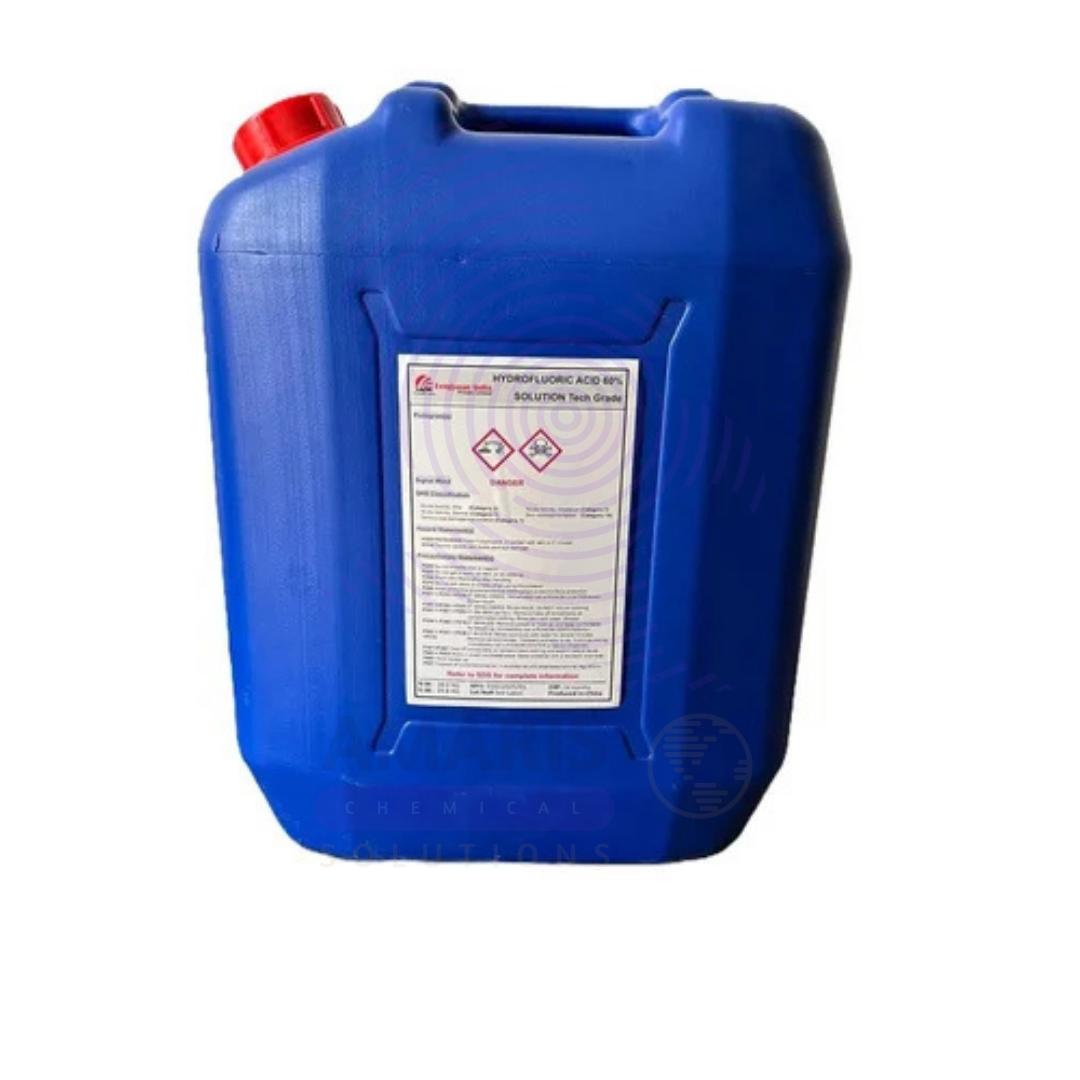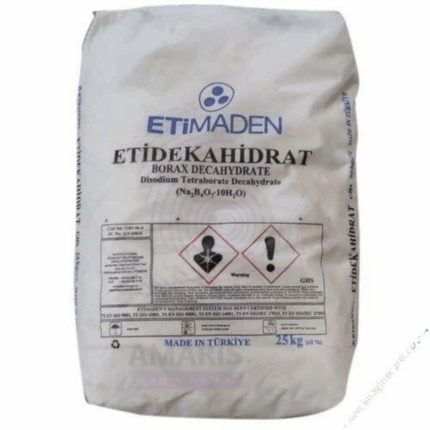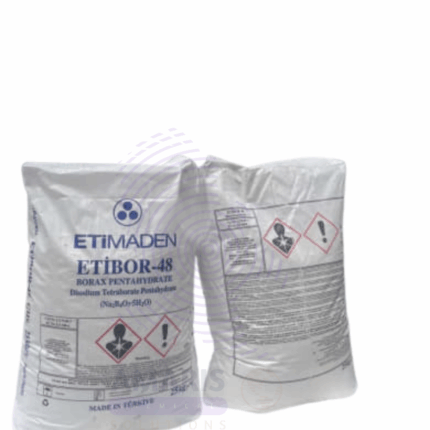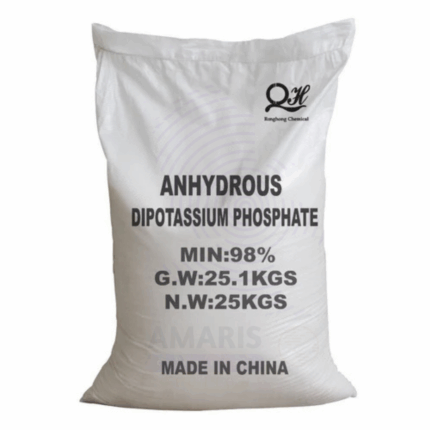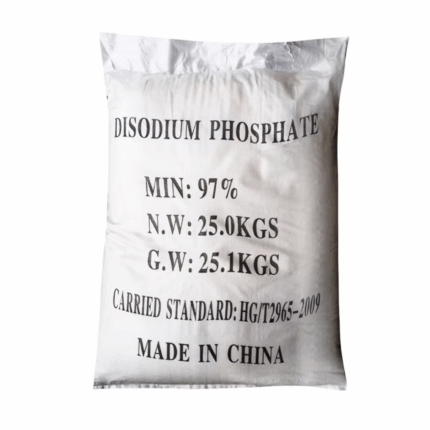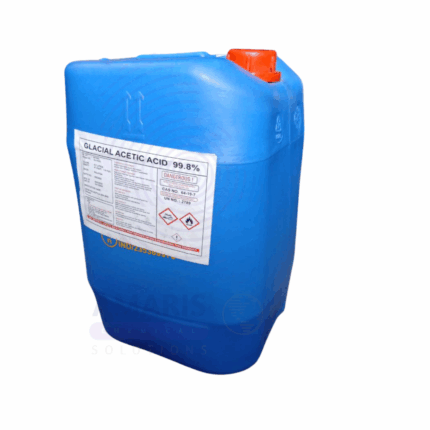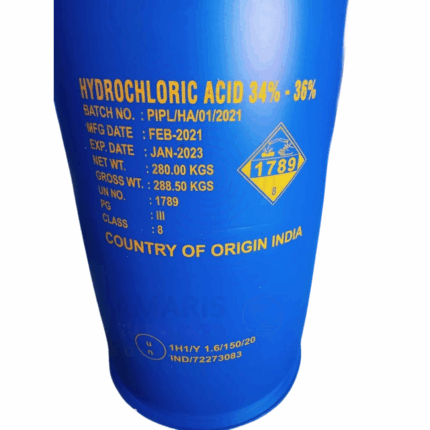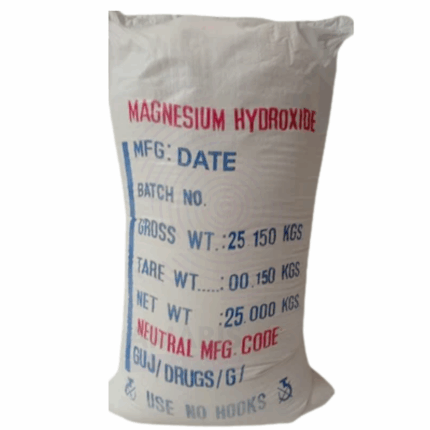Back to products


Hydrogen Peroxide Food Grade
$ 2.00 Original price was: $ 2.00.$ 1.44Current price is: $ 1.44.
Hydrofluoric Acid HF
$ 8.00 Original price was: $ 8.00.$ 7.74Current price is: $ 7.74.
Whatsapp Order
Hydrofluoric Acid HF is a highly corrosive aqueous solution of hydrogen fluoride gas dissolved in water. It is a colorless to pale yellow fuming liquid with a strong pungent odor. Unlike other mineral acids, HF is a weak acid chemically but uniquely reactive due to its ability to dissolve silica and glass, and penetrate tissues deeply. This makes it invaluable in numerous industrial, laboratory, and specialized applications but also highly hazardous.
Description
Table of Contents
Toggle
Hydrofluoric Acid HF
Primary Uses
- Industrial and Manufacturing Applications
- Glass and Quartz Etching: HF is extensively used for precise etching, frosting, and engraving on glass, quartz, and silica-based materials for decorative, optical, and industrial purposes.
- Metal Cleaning and Pickling: Efficient at removing oxides, rust, and scales from stainless steel, aluminum, and other metals prior to plating or fabrication.
- Chemical Synthesis: Key reagent and catalyst in the manufacture of fluorinated compounds, such as hydrofluorocarbons (HFCs), fluoropolymers (e.g., PTFE/Teflon), refrigerants, and pharmaceuticals.
- Petroleum Refining: Used as a catalyst in the alkylation process to produce high-octane gasoline components, improving fuel quality.
- Silicon and Semiconductor Processing: Critical in microelectronics for etching silicon wafers and cleaning delicate components in chip manufacturing.
- Laboratory and Analytical Uses
- Sample Preparation: For elemental analysis, HF digests silicate and mineral samples by dissolving silica matrices to allow metal analysis.
- Surface Treatment: Used to clean and prepare surfaces of ceramics and electronic materials.
- Environmental and Waste Treatment
- Occasionally employed in highly controlled settings to neutralize or break down fluorinated wastes or residues.
Secondary Uses
- Dental and Medical Applications
- Dental Etching: Used at much lower concentrations to etch tooth enamel during restorative dentistry procedures, enhancing bonding of fillings and sealants.
- Art and Craft
- Used by artists and glassmakers to create frost patterns and textures on glass objects and artworks.
- Specialized Industrial Cleaning
- Cleaning of scale and deposits in industrial equipment, pipelines, and reactors where silica or metal oxides accumulate.
- Electronics and Optics
- Etching and cleaning optical fibers, lenses, and precision glass instruments to improve clarity and performance.
- Research and Development
- Used in chemical research for synthesis and as a reagent for fluoride ion introduction in complex organic reactions.
KEY ATTRIBUTES
- Basic Identification Attributes
- Chemical Name (IUPAC): Hydrogen fluoride (aqueous)
- Common/Trade Name: Hydrofluoric Acid 50%
- CAS Number: 7664-39-3
- HS Code: 2811.12.00
- Molecular Formula: HF (aqueous)
- Synonyms: Fluoric acid; Hydrogen fluoride solution
- Physical & Chemical Properties
- Physical State: Liquid
- Color & Odor: Colorless to pale yellow; sharp, pungent odor
- Boiling Point: Approx. 108 °C at 50% concentration
- Density: ~1.15 g/cm³
- Solubility: Miscible with water
- pH: <1 (strongly acidic)
- Corrosivity: Highly corrosive to skin, glass, metals, and tissues
- Safety & Hazard Attributes
- GHS Classification:
- Skin corrosion/irritation: Category 1A
- Serious eye damage/irritation: Category 1
- Specific target organ toxicity (single exposure): Category 3 (respiratory irritation)
- Toxicity: Extremely toxic via skin contact, inhalation, and ingestion
- Exposure Limits: OSHA PEL 3 ppm; ACGIH TLV 0.5 ppm (ceiling)
- Storage & Handling Attributes
- Container Type: Polyethylene, Teflon, or HF-resistant plastic containers only
- Storage Conditions: Cool, dry, ventilated area, away from bases, metals, and oxidizers
- Shelf Life: Stable up to 24 months if stored properly
- Handling Notes: Extreme care with full PPE and emergency protocols
- Regulatory & Compliance Attributes
- Regulated as hazardous substance by OSHA, EPA, REACH, and transport authorities
- Labeling and documentation required for transport and storage
- Environmental & Health Impact
- Not biodegradable; environmentally hazardous to aquatic organisms
- Not bioaccumulative but highly toxic in environmental exposures
- No known carcinogenicity but severe acute toxicity and systemic effects
SAFETY HANDLING PRECAUTIONS
- Safety Handling Precautions
- PPE: Acid-resistant gloves, full-face shield, protective apron, respirator with acid gas cartridges
- Handling: Use in fume hoods; avoid skin contact and inhalation; calcium gluconate gel must be readily available for emergency treatment
- Hygiene: No eating or smoking; thorough washing after use
- First Aid Measures
- Inhalation: Move to fresh air immediately; provide oxygen if necessary; seek urgent medical attention
- Skin Contact: Rinse with water continuously for 15+ minutes; apply calcium gluconate gel; urgent medical care required
- Eye Contact: Flush eyes with water for at least 15 minutes; immediate medical attention essential
- Ingestion: Do NOT induce vomiting; rinse mouth; seek emergency care immediately
- Firefighting Measures
- Fire Hazards: Not flammable but reacts with metals releasing flammable hydrogen gas
- Extinguishing Media: Water spray preferred; foam, dry chemical, CO₂ acceptable for surrounding fire
- Precautions: Firefighters require SCBA and acid-resistant gear
- Decomposition Products: Toxic fluorine-containing gases and hydrogen gas
Related products
Borax Decahydrate
Borax Decahydrate, also known as sodium tetraborate decahydrate, is a naturally occurring mineral and an important inorganic compound. It appears as colorless or white crystalline granules or powder with a salty, alkaline taste. This compound is widely used in detergents, cosmetics, glass manufacturing, agriculture, and various industrial applications due to its excellent buffering, emulsifying, and antiseptic properties. The “decahydrate” indicates that each molecule of borax contains ten water molecules bound in its crystal structure, contributing to its crystalline appearance and physical properties.
Borax Pentahydrate
Borax Pentahydrate (sodium tetraborate pentahydrate) is an inorganic compound and a hydrated form of borax. It typically appears as colorless to white crystalline granules or powder. This compound contains five molecules of water of crystallization per formula unit, distinguishing it from other borax hydrates such as the decahydrate form. Borax Pentahydrate is widely used across industries including detergents, glass production, agriculture, and cosmetics, valued for its buffering capacity, emulsification, and antiseptic properties. It is soluble in water and exhibits alkaline properties in aqueous solution.
Citric Acid Anhydrous
Citric Acid Anhydrous is a white, crystalline organic acid widely used across food, pharmaceutical, cosmetic, and industrial sectors. It is the anhydrous form of citric acid, meaning it contains no water molecules in its crystal lattice, resulting in higher purity and more concentrated acidic properties compared to its monohydrate form. Derived from natural sources like citrus fruits or produced via microbial fermentation, citric acid anhydrous is valued for its sour taste, excellent chelating ability, and buffering capacity. It serves as a natural preservative, pH adjuster, antioxidant synergist, and cleaning agent, making it a versatile ingredient in many formulations.
Dipotassium Hydrogen Phosphate
Dipotassium Hydrogen Phosphate (also known as dipotassium phosphate, DKP) is an inorganic salt used widely as a buffering agent, emulsifier, and nutritional supplement in various industries. It is a white, crystalline, highly water-soluble powder with alkaline properties. DKP plays a vital role in food processing, pharmaceuticals, water treatment, and agriculture due to its ability to stabilize pH, improve texture, and supply essential potassium and phosphate ions.
Disodium Phosphate
Disodium Phosphate, also known as sodium phosphate dibasic, is an inorganic compound widely used for its buffering, emulsifying, and chelating properties. It commonly appears as a white, odorless crystalline powder or granules that are highly soluble in water and alkaline in nature. Disodium Phosphate plays a vital role in regulating pH, improving stability in formulations, and providing essential sodium and phosphate ions. It finds extensive use across food processing, pharmaceuticals, water treatment, agriculture, and industrial applications.
Glacial Acetic Acid Food Grade
Glacial Acetic Acid Food Grade is a clear, colorless liquid organic compound with a pungent vinegar-like odor. It is a high-purity form of acetic acid specifically produced and processed for safe use in food applications. As the main component of vinegar (after dilution), it serves as a critical flavoring agent, pH adjuster, and preservative in the food industry. Food-grade acetic acid typically has a concentration of 80-100% (glacial acetic acid) or is diluted to lower concentrations (4-20%) for specific applications.
Hydrochloric Acid HCL 270 kg Drum
Hydrochloric Acid HCL 270 kg Drum is a highly corrosive, strong mineral acid consisting of hydrogen chloride gas dissolved in water to a concentration of approximately 33% by weight. It appears as a clear, colorless to slightly yellow liquid with a sharp, pungent odor. HCl 33% is widely used in industrial, chemical, and laboratory applications due to its strong acidic properties, high reactivity, and versatility. It plays a crucial role in pH control, metal processing, chemical synthesis, and cleaning processes across numerous sectors.
Magnesium Hydroxide BP
Magnesium Hydroxide BP is a white, odorless, fine powder or suspension with the chemical formula Mg(OH)₂. It is a pharmacopeial grade material meeting British Pharmacopoeia standards, widely used for its antacid, laxative, and neutralizing properties. Magnesium Hydroxide BP is sparingly soluble in water, releasing hydroxide ions that neutralize acids and increase pH. It finds broad applications in pharmaceuticals, water treatment, environmental management, and industrial processes.


 Preservatives(food)
Preservatives(food) Flavor Enhancers
Flavor Enhancers Acidulants
Acidulants Sweeteners
Sweeteners Antioxidants
Antioxidants Colorants(food)
Colorants(food) Nutraceutical Ingredients (food)
Nutraceutical Ingredients (food) Nutrient Supplements
Nutrient Supplements Emulsifiers
Emulsifiers
 Collectors
Collectors Dust Suppressants
Dust Suppressants Explosives and Blasting Agents
Explosives and Blasting Agents Flocculants and Coagulants
Flocculants and Coagulants Frothers
Frothers Leaching Agents
Leaching Agents pH Modifiers
pH Modifiers Precious Metal Extraction Agents
Precious Metal Extraction Agents
 Antioxidants(plastic)
Antioxidants(plastic) Colorants (Pigments, Dyes)
Colorants (Pigments, Dyes) Fillers and Reinforcements
Fillers and Reinforcements Flame Retardants
Flame Retardants Monomers
Monomers Plasticizers
Plasticizers Polymerization Initiators
Polymerization Initiators Stabilizers (UV, Heat)
Stabilizers (UV, Heat)
 Antifoaming Agents
Antifoaming Agents Chelating Agents
Chelating Agents Coagulants and Flocculants
Coagulants and Flocculants Corrosion Inhibitors
Corrosion Inhibitors Disinfectants and Biocides
Disinfectants and Biocides Oxidizing Agents
Oxidizing Agents pH Adjusters
pH Adjusters Scale Inhibitors( water)
Scale Inhibitors( water)
 Antioxidants(cosmetic)
Antioxidants(cosmetic) Emollients
Emollients Fragrances and Essential Oils
Fragrances and Essential Oils Humectants
Humectants Preservatives
Preservatives Surfactants(cosmetic)
Surfactants(cosmetic) Thickeners
Thickeners UV Filters
UV Filters
 Fertilizers
Fertilizers Soil Conditioners
Soil Conditioners Plant Growth Regulators
Plant Growth Regulators Animal Feed Additives
Animal Feed Additives Biostimulants
Biostimulants Pesticides (Herbicides, Insecticides, Fungicides)
Pesticides (Herbicides, Insecticides, Fungicides)
 Active Pharmaceutical Ingredients (APIs)
Active Pharmaceutical Ingredients (APIs) Excipients
Excipients Solvents(pharmaceutical)
Solvents(pharmaceutical) Antibiotics
Antibiotics Antiseptics and Disinfectants
Antiseptics and Disinfectants Vaccine Adjuvants
Vaccine Adjuvants Nutraceutical Ingredients (pharmaceutical)
Nutraceutical Ingredients (pharmaceutical) Analgesics & Antipyretics
Analgesics & Antipyretics
 Analytical Reagents
Analytical Reagents Solvents(lab)
Solvents(lab) Chromatography Chemicals
Chromatography Chemicals Spectroscopy Reagents
Spectroscopy Reagents microbiology-and-cell-culture-reagents
microbiology-and-cell-culture-reagents Molecular Biology Reagents
Molecular Biology Reagents Biochemical Reagents
Biochemical Reagents Inorganic and Organic Standards
Inorganic and Organic Standards Laboratory Safety Chemicals
Laboratory Safety Chemicals Specialty Laboratory Chemicals(Special Laboratory Equipment)
Specialty Laboratory Chemicals(Special Laboratory Equipment)
 Demulsifiers
Demulsifiers Hydraulic Fracturing Fluids
Hydraulic Fracturing Fluids Scale Inhibitors(oil)
Scale Inhibitors(oil) Surfactants(oil)
Surfactants(oil) Drilling Fluids
Drilling Fluids
 Dyes and Pigments
Dyes and Pigments Bleaching Agents
Bleaching Agents Softening Agents
Softening Agents Finishing Agents
Finishing Agents Antistatic Agents
Antistatic Agents
 Admixtures
Admixtures Waterproofing Agents
Waterproofing Agents Sealants and Adhesives
Sealants and Adhesives Curing Compounds
Curing Compounds Concrete Repair Chemicals
Concrete Repair Chemicals Anti-Corrosion Coatings
Anti-Corrosion Coatings
 Surfactants(cleaning)
Surfactants(cleaning) Builders
Builders Enzymes
Enzymes Solvents (Cleaning)
Solvents (Cleaning) Fragrances
Fragrances
 Electronic Chemicals
Electronic Chemicals Catalysts
Catalysts Lubricants
Lubricants Photographic Chemicals
Photographic Chemicals Refrigerants
Refrigerants Automotive chemicals
Automotive chemicals Pyrotechnic Chemicals
Pyrotechnic Chemicals
 Biodegradable Surfactants
Biodegradable Surfactants Bio-based Solvents
Bio-based Solvents Renewable Polymers
Renewable Polymers Carbon Capture Chemicals
Carbon Capture Chemicals Wastewater Treatment Chemicals
Wastewater Treatment Chemicals
 Pigments
Pigments Solvents(paint)
Solvents(paint) Specialty Coatings
Specialty Coatings Binders/Resins
Binders/Resins Additives
Additives Driers
Driers Anti-Corrosion Agents
Anti-Corrosion Agents Functional Coatings
Functional Coatings Application-Specific Coatings
Application-Specific Coatings
 Fresh Herbs
Fresh Herbs Ground Spices
Ground Spices Whole Spices
Whole Spices Spice Blends
Spice Blends Dried Herbs
Dried Herbs
 Leavening Agents
Leavening Agents Dough Conditioners
Dough Conditioners Flour Treatments
Flour Treatments Fat Replacers
Fat Replacers Decoratives
Decoratives Preservatives(baking)
Preservatives(baking)
 Plasticizers & Softeners
Plasticizers & Softeners Reinforcing Agents
Reinforcing Agents Adhesion Promoters
Adhesion Promoters Vulcanizing Agents
Vulcanizing Agents Antidegradants
Antidegradants Blowing Agents
Blowing Agents Fillers & Extenders
Fillers & Extenders Accelerators & Retarders
Accelerators & Retarders